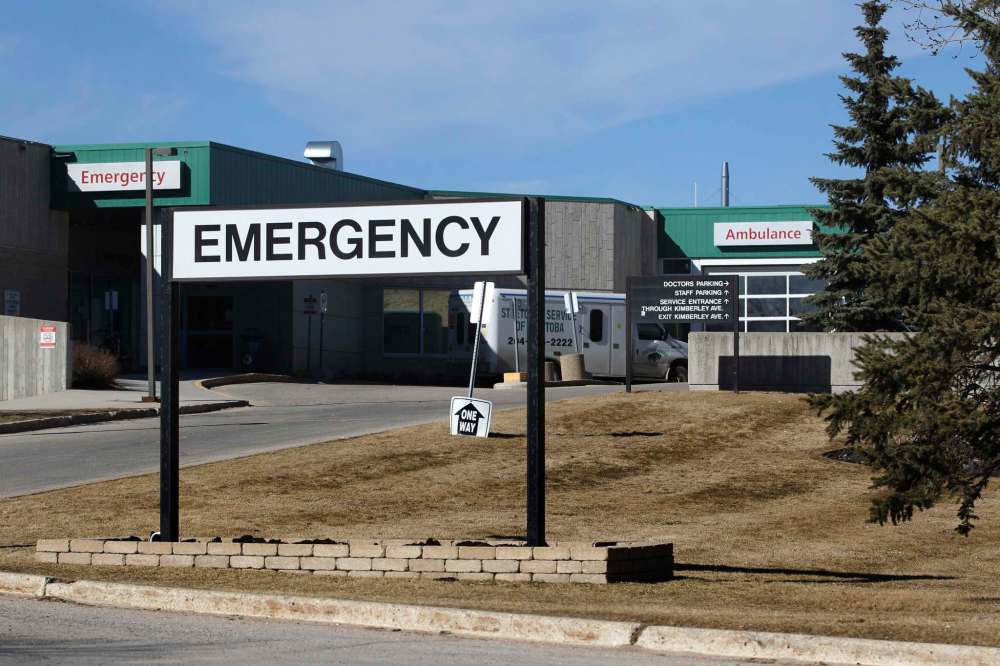Winnipeg ER closures to be staggered
Report recommends closing rural ERs that don't deal with high-priority patients
Advertisement
Read this article for free:
or
Already have an account? Log in here »
To continue reading, please subscribe:
Monthly Digital Subscription
$1 per week for 24 weeks*
- Enjoy unlimited reading on winnipegfreepress.com
- Read the E-Edition, our digital replica newspaper
- Access News Break, our award-winning app
- Play interactive puzzles
*Billed as $4 plus GST every four weeks. Offer only available to new and qualified returning subscribers. Cancel any time.
Read unlimited articles for free today:
or
Already have an account? Log in here »
Hey there, time traveller!
This article was published 20/12/2017 (2599 days ago), so information in it may no longer be current.
Reducing wait times as part of a dramatic overhaul to Manitoba’s health-care system is going to require a significant shift in attitude, says one of the leaders of a task force that studied the issue.
Dr. Alecs Chochinov, co-chairman of the Manitoba Health wait times reduction task force’s emergency department committee, was on hand Wednesday as the long-awaited report was finally released to the public.
In broad strokes, the 358-page document recommends beefing up Telehealth, the possible closure of several rural emergency departments, a stop on buying new magnetic resonance imaging machines until demand warrants it, and a delay to the planned closure of the Concordia Hospital and Seven Oaks General Hospital ERs.

But, Chochinov said, the changes aren’t all operational.
“This is a monumental change,” he said. “It’s as much social engineering as it is mechanical or structural… there are major behavioural and cultural changes that are going to have to happen within programs, between programs, and between regions to make this right.”
In its executive summary, the report stresses the need to involve both patients and the public in the planning as their involvement is linked with better quality health-care services and is “key” to implementing change.
And, as it makes abundantly clear, change is required.
“When the interlinked system is not working smoothly, it manifests as ED (emergency department) overcrowding,” the report says, which is “a symptom of whole-system problems, just as a high fever warns us that there is an infection somewhere.”
The task force is recommending the Winnipeg Regional Health Authority push pause on plans to close the Concordia and Seven Oaks emergency departments this spring. To close them together in tandem, it says, would “put a monumental burden” on the city’s remaining emergency rooms.
St. Boniface Hospital, in particular, requires substantial capital upgrades, well beyond the $3-million renovation announced earlier this year. “Piecemeal renovations,” the report says, won’t be adequate.
The WRHA is already in agreement, announcing plans to stagger the closures sometime following the late-spring opening of the new Grace Hospital emergency department.
“We certainly recognize we can’t overheat St. Boniface’s emergency department, so that will need to be looked at very carefully,” said Lori Lamont, the region’s acting chief operating officer.
The region is in the middle of a comprehensive assessment of how Phase 1 of its clinical consolidation plan went, she said, in keeping with the task force’s recommendation that Phase 2 ER closures be delayed until such an assessment is done.
While the WRHA’s initial estimate for how long the overhaul would take was anywhere between six months and 24 months, Lamont said Wednesday that needing the full 24 months is looking more realistic, with Phase 2 wrapping up in spring 2019.
Lamont wouldn’t put a new closure date on either the Concordia or Seven Oaks ERs, but did say neither would close until the Grace ER is up and running. It’s scheduled to open sometime in May.
“The need to be moving forward, continuing that momentum of moving forward at the same time ensuring that we’re considering all of the things the report asks us to consider… is the challenge for us,” she said.
The report makes it pretty clear the province’s Tory government is only thinking about the bottom line, said NDP health critic Andrew Swan.
“We’ve now seen in this report, effectively advice to the government that they’ve moved too quickly,” he said. “It highlights the fact this government has moved so hastily to try to cut money that they haven’t actually had the best interest of Manitoba patients at heart.”
While the provincial health minister said in August the wait times reduction task force was in keeping with a previous report by Dr. David Peachey, the president of CUPE Local 204 said in a release it’s not all lining up.
The report by consultant KPMG (made public after Peachey’s review) seems to push for fast changes, said Debbie Boissonneault, who represents health-care workers across Winnipeg, while the wait times task force is recommending a slower approach.
“We are already experiencing the additional stress on health-care staff in facilities across the province due to all these changes happening at once and the mixed messages from government,” said Boissonneault.
“There are numerous different reports being implemented in-part or in-full at the same time, and there seems to be no coherent plan on how these changes will impact patient care.”
jane.gerster@freepress.mb.ca
History
Updated on Wednesday, December 20, 2017 1:31 PM CST: Adds details about rural ERs
Updated on Wednesday, December 20, 2017 5:59 PM CST: Final write through


